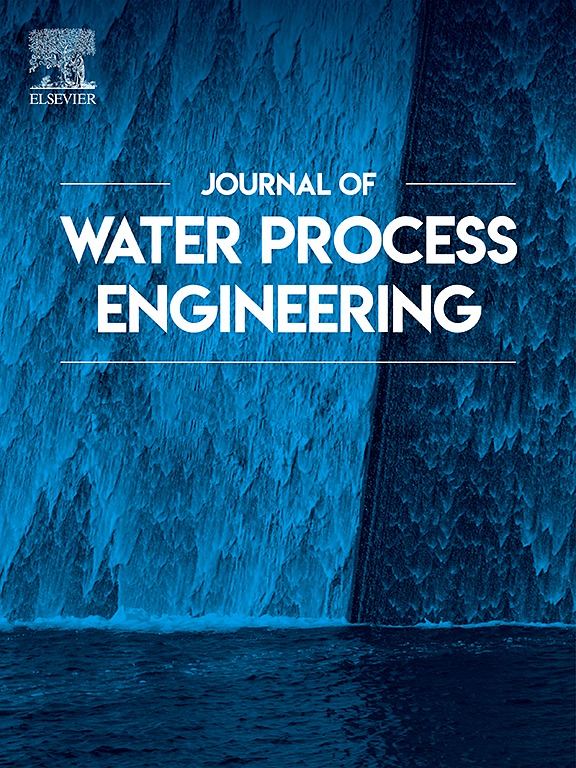Exploring the synergy between microbial fuel cells and constructed wetlands in dairy waste water treatment: A comprehensive review
IF 6.3
2区 工程技术
Q1 ENGINEERING, CHEMICAL
引用次数: 0
Abstract
Constructing wetland are highly recognize as a promising alternative approach for the treatment of dairy waste water due to their low energy needs, cost effectiveness, environmental benefit as well as ease operation. This review study explores different types of trends as well as strategies for utilizing constructed wetland in dairy waste water treatment and highlighting recent advancement and innovative developments in constructed wetland technology. The integration of constructed wetland with microbial fuel cell has demonstrated dual benefit as effectively treating the contaminants present in daily wastewater while generating electricity as a renewable energy form. CW˗MFC represents one of the most promising bio˗electrochemical systems where integration can help develop symbiotic relationships among plant microbiota in the aquatic plant rhizospheres. Thus, such systems will transform sun energy into bioelectricity due to formation of endogenous substrates, radical secretions and microbial activities. Numerous scientists have explored the application and efficiency of CW˗MFC for dairy wastewater treatment, focusing on its design and performance. The key factors influencing the development of CW˗MFC technology, such as reactor configurations, plant species, electrode materials and bioelectricity generation were comprehensively reviewed. Additionally, directions regarding the future research have been proposed to enhance its performance further. Overall, CW˗MFC offers an environmentally friendly solution for protecting aquatic ecosystems, while also providing aesthetic and ecological benefits by incorporation of materials such as electroactive bacteria, soil, gravel and plants that are found naturally in well managed conditions.

求助全文
约1分钟内获得全文
求助全文
来源期刊

Journal of water process engineering
Biochemistry, Genetics and Molecular Biology-Biotechnology
CiteScore
10.70
自引率
8.60%
发文量
846
审稿时长
24 days
期刊介绍:
The Journal of Water Process Engineering aims to publish refereed, high-quality research papers with significant novelty and impact in all areas of the engineering of water and wastewater processing . Papers on advanced and novel treatment processes and technologies are particularly welcome. The Journal considers papers in areas such as nanotechnology and biotechnology applications in water, novel oxidation and separation processes, membrane processes (except those for desalination) , catalytic processes for the removal of water contaminants, sustainable processes, water reuse and recycling, water use and wastewater minimization, integrated/hybrid technology, process modeling of water treatment and novel treatment processes. Submissions on the subject of adsorbents, including standard measurements of adsorption kinetics and equilibrium will only be considered if there is a genuine case for novelty and contribution, for example highly novel, sustainable adsorbents and their use: papers on activated carbon-type materials derived from natural matter, or surfactant-modified clays and related minerals, would not fulfil this criterion. The Journal particularly welcomes contributions involving environmentally, economically and socially sustainable technology for water treatment, including those which are energy-efficient, with minimal or no chemical consumption, and capable of water recycling and reuse that minimizes the direct disposal of wastewater to the aquatic environment. Papers that describe novel ideas for solving issues related to water quality and availability are also welcome, as are those that show the transfer of techniques from other disciplines. The Journal will consider papers dealing with processes for various water matrices including drinking water (except desalination), domestic, urban and industrial wastewaters, in addition to their residues. It is expected that the journal will be of particular relevance to chemical and process engineers working in the field. The Journal welcomes Full Text papers, Short Communications, State-of-the-Art Reviews and Letters to Editors and Case Studies
 求助内容:
求助内容: 应助结果提醒方式:
应助结果提醒方式:


